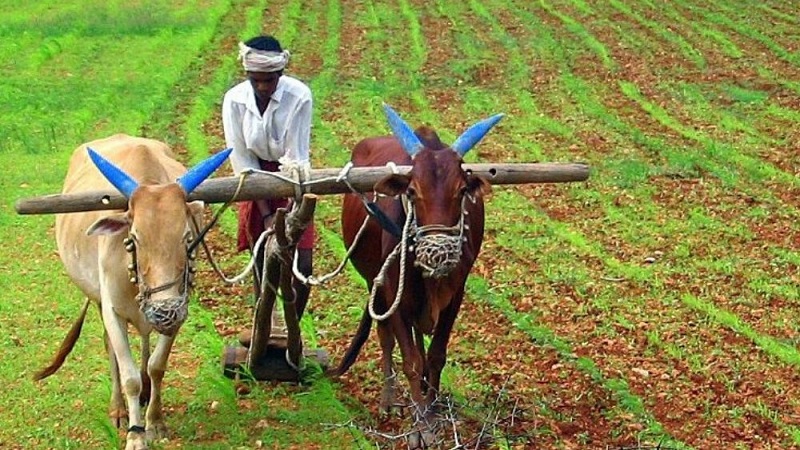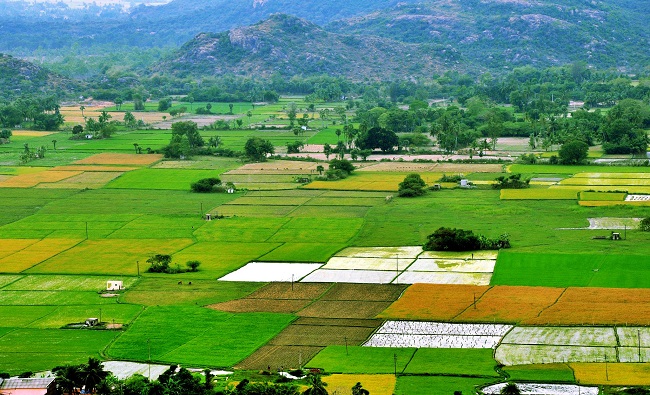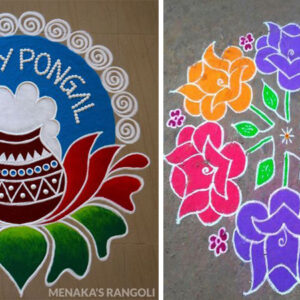India is a land of rich agricultural heritage, boasting a diverse range of farming practices. The country’s unique geographical and climatic conditions have given rise to various agricultural systems, each offering its own set of advantages and challenges. In this article, we will delve into the different types of agriculture in India, highlighting their significance, contributions, and potential for sustainable growth.
Different Types of Farming In India:
1. Traditional Agriculture in India:
Overview of Traditional Agriculture:
- Traditional agriculture forms the backbone of India’s agrarian society. Passed down through generations, these time-honoured practices have sustained rural communities for centuries. Emphasizing manual labour, natural fertilizers, and traditional crop varieties, this agriculture fosters a deep connection with the land and its cycles.
Key Features of Traditional Agriculture:
- Crop Rotation and Intercropping: Traditional farmers practice crop rotation and intercropping to maintain soil fertility and reduce pest infestations.
- Use of Organic Manure: Organic manure, such as cow dung and compost, is the primary source of nutrients for crops.
- Indigenous Seeds: Farmers use indigenous seed varieties adapted to local conditions, preserving genetic diversity.
- Agroforestry: Integrating trees with crops ensures better resource utilization and ecological balance.
Importance of Preserving Traditional Agriculture:
Traditional agriculture is not just a method of farming; it is a way of life that holds immense cultural and ecological value. Preserving these practices is vital to safeguard biodiversity, promote sustainability, and protect the livelihoods of millions of rural farmers.
2. Modern Agriculture in India:
The Green Revolution:
The Green Revolution of the 1960s ushered in a new era of modern agriculture in India. With the introduction of high-yielding crop varieties, chemical fertilizers, and pesticides, agricultural productivity saw a significant boost. This revolution played a pivotal role in making India self-sufficient in food production.
Key Features of Modern Agriculture:
- High-Yielding Varieties (HYVs): HYVs of crops, like wheat and rice, produce higher yields and shorten the growth cycle.
- Irrigation Infrastructure: Modern agriculture relies on advanced irrigation systems to provide consistent water supply to crops.
- Mechanization: Farm machineries, such as tractors and harvesters, reduces manual labour and increases efficiency.
- Hybrid Seeds: Hybrid seeds with improved traits offer better resistance to diseases and environmental stresses.
Advantages and Challenges of Modern Agriculture:
While modern agriculture has brought tremendous benefits, it faces challenges like environmental degradation, over-dependence on chemical inputs, and socio-economic disparities. Striking a balance between the benefits and drawbacks is crucial for a sustainable future.
3. Organic Farming in India:
Embracing Sustainability:
Organic farming is gaining popularity as a sustainable alternative to conventional practices. It promotes ecological harmony, minimizes chemical usage, and emphasizes natural farming techniques.
Key Principles of Organic Farming:
- Prohibition of Chemicals: Organic farming strictly prohibits synthetic fertilizers, pesticides, and genetically modified organisms (GMOs).
- Soil Health Management: The focus is on enhancing soil fertility through organic matter and composting.
- Crop Diversity: Farmers grow a variety of crops to maintain ecological balance and reduce pest infestations.
- Animal Integration: Livestock plays a vital role in organic farming, contributing to nutrient recycling and pest control.
Benefits of Organic Farming:
- Healthier Food: Organic produce is free from harmful chemicals, ensuring safer and more nutritious food.
- Environmentally Friendly: Organic farming reduces pollution, conserves water, and protects biodiversity.
- Sustainable Livelihoods: It offers better income opportunities for farmers, especially in niche markets.
- Climate Resilience: Organic practices help mitigate climate change by promoting carbon sequestration.
4. Hydroponics and Urban Farming in India:
Growing Beyond Soil:
Hydroponics and urban farming are innovative techniques that break traditional barriers of space and geography. With limited land availability in urban areas, these methods allow for efficient, year-round cultivation.
Hydroponics:
Hydroponics involves growing plants without soil, using mineral nutrient solutions in a water solvent. This method optimizes resource utilization and reduces water wastage.
Urban Farming:
Urban farming transforms rooftops, balconies, and unused spaces into productive agricultural zones. It fosters a sense of community and reconnects urban dwellers with the food they consume.
See More: Different Types of Attitude
Advantages of Hydroponics and Urban Farming:
- Space Efficiency: Hydroponics and urban farming utilize vertical spaces, maximizing yield per square meter.
- Water Conservation: Both methods require less water compared to traditional agriculture.
- Fresh Produce Availability: Urban farming ensures locally grown, fresh produce in metropolitan areas.
- Reduced Carbon Footprint: Shorter supply chains reduce transportation emissions and support sustainability.
5. Sericulture and Silk Production in India:
The Art of Silk Cultivation:
Sericulture, the process of rearing silkworms and producing silk, has a long history in India. The country is one of the largest silk producers globally, renowned for its exquisite silk textiles.
Sericulture Process:
- Mulberry Cultivation: Mulberry leaves serve as the primary food for silkworms, requiring specific agroclimatic conditions.
- Silkworm Rearing: Silkworms undergo several moulting stages before spinning cocoons from silk thread.
- Silk Extraction: Cocoons are boiled, and the silk thread is carefully extracted and spun into yarn.
- Weaving and Textile Production: Skilled artisans weave silk into intricate textiles like sarees and fabrics.
Significance of Silk Production:
- Cultural Heritage: Silk is deeply woven into India’s cultural and religious fabric.
- Economic Growth: Sericulture provides livelihoods to millions, especially in rural areas.
- Exports: India exports silk and silk products to numerous countries, contributing to foreign exchange.
6. Dairy Farming and Livestock in India:
The Dairy Land of India:
Dairy farming plays a crucial role in India’s agricultural economy. With the world’s largest bovine population, the country is a significant milk producer.
Dairy Farming Practices:
- Cattle Rearing: Indian breeds like Gir, Sahiwal, and Murrah buffalo are raised for milk production.
- Milk Collection and Distribution: Cooperative societies facilitate the collection and distribution of milk.
- Milk Processing: Milk is processed into dairy products like ghee, butter, and yoghurt.
- Livestock Nutrition: Proper nutrition and veterinary care ensure healthy and productive livestock.
Contributions of Dairy Farming:
- Nutritional Security: Dairy products are rich sources of essential nutrients, supporting public health.
- Rural Employment: Dairy farming generates employment opportunities, particularly for women.
- Livelihood Diversification: It acts as an additional income source for farmers, promoting financial stability.
See More: Different Types Of Dogs
7. Precision Farming in India:
The Future of Agriculture:
Precision farming, also known as smart farming or digital agriculture, leverages technology to optimize resource use and increase crop productivity.
Technological Interventions:
- Remote Sensing: Satellite imagery and drones monitor crop health and identify issues.
- IoT and Sensors: Soil sensors provide real-time data on moisture, temperature, and nutrient levels.
- Data Analytics: Artificial intelligence analyzes data to predict crop patterns and optimize irrigation.
- Automation: Smart machines perform tasks like seeding, spraying, and harvesting with precision.
Advantages of Precision Farming:
- Resource Efficiency: Precision farming minimizes water, fertilizer, and pesticide usage.
- Higher Yields: Accurate data-driven decisions lead to increased crop yields.
- Environmental Sustainability: Reduced chemical usage benefits ecosystems and biodiversity.
8. Horticulture and Floriculture in India:
The World of Blooms and Greens:
Horticulture and floriculture focus on cultivating fruits, vegetables, flowers, and ornamental plants.
Diverse Horticulture Practices:
- Fruit Orchards: India produces a wide range of fruits like mangoes, apples, and bananas.
- Vegetable Cultivation: High-value vegetables like tomatoes, peppers, and cucumbers are grown.
- Flower Gardens: India’s flower industry includes roses, marigolds, and jasmine.
- Nursery Management: Plant propagation and nursery management are integral to horticulture.
Importance of Horticulture and Floriculture:
- Nutritional Value: Horticultural products contribute to a balanced diet and food security.
- Aesthetic Appeal: Floriculture enhances the beauty of spaces and supports the floral industry.
- Export Potential: India’s horticultural products are in demand in global markets.
9. Aquaculture and Fisheries in India:
Beneath the Water’s Surface:
Aquaculture and fisheries cater to the growing demand for seafood and contribute to India’s food security.
Fish Farming:
- Freshwater Aquaculture: Carp, catfish, and tilapia are commonly raised in freshwater ponds.
- Marine Aquaculture: Shrimp, prawns, and seabass are farmed in coastal waters.
- Fish Hatcheries: Hatcheries produce fish fry and seedlings for stocking ponds and lakes.
The Importance of Aquaculture:
- Economic Growth: Aquaculture provides livelihoods to millions, especially in coastal regions.
- Food Security: Seafood consumption is a significant protein source for the population.
- Exports: India exports fish and fish products to various countries, earning foreign exchange.
FAQs (Frequently Asked Questions):
1. What are the main types of agriculture in India?
Ans: Different types of agriculture in India include traditional agriculture, modern agriculture, organic farming, hydroponics, sericulture, dairy farming, precision farming, horticulture, and aquaculture.
2. How does traditional agriculture differ from modern agriculture?
Ans: Traditional agriculture relies on manual labour, organic manure, and indigenous seed varieties, while modern agriculture adopts high-yielding crop varieties, chemical fertilizers, and mechanization.
3. What are the advantages of organic farming?
Ans: Organic farming promotes healthier food, environmental sustainability, sustainable livelihoods, and climate resilience.
4. How does hydroponics work, and what are its benefits?
Ans: Hydroponics involves growing plants without soil, using mineral nutrient solutions in water. Its benefits include space efficiency, water conservation, fresh produce availability, and reduced carbon footprint.
5. Why is sericulture important in India?
Ans: Sericulture is significant for its cultural heritage, economic growth, and contribution to exports.
6. What are the contributions of dairy farming to India’s economy?
Ans: Dairy farming provides nutritional security, rural employment, and livelihood diversification.
India’s agricultural landscape is a tapestry of diverse farming practices, each weaving together tradition, innovation, and sustainability. From the time-honoured methods of traditional agriculture to technologically advanced precision farming, each type of agriculture in India plays a crucial role in ensuring food security, economic growth, and environmental sustainability.
As we continue to explore the possibilities of agriculture, it is essential to strike a harmonious balance between preserving our rich heritage and embracing advancements that pave the way for a greener, more resilient future.






